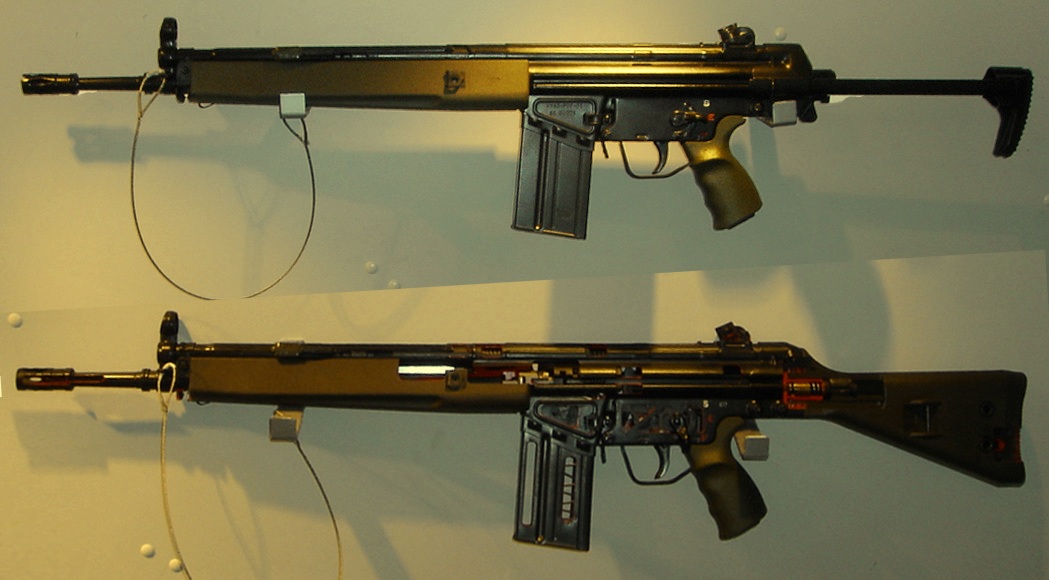
US Army G3: Understanding Its Role and Functionality
The US Army G3, often referred to as the G3/5/7, is a critical component of the Army’s staff structure, playing a pivotal role in operations, plans, and training. Understanding the functions and responsibilities of the US Army G3 is essential for anyone involved in military operations, strategic planning, or defense analysis. This article delves into the intricacies of what the US Army G3 does, its organization, and its significance within the broader military context.
What is the US Army G3?
The G3 is a staff section within the US Army headquarters responsible for operations and training. The designation ‘G3’ comes from the General Staff system, where ‘G’ stands for General Staff, and ‘3’ denotes the operations and training section. The US Army G3 section is typically headed by a senior officer, often a colonel or a general, who oversees the planning, coordination, and execution of military operations and training exercises.
The G3 section exists at various levels within the Army, from the Department of the Army headquarters down to brigade and battalion levels. Each level has its specific responsibilities tailored to the scope and scale of operations at that echelon. The primary goal of the US Army G3 is to ensure that the Army is prepared for and capable of conducting successful military operations.
Key Responsibilities of the US Army G3
The responsibilities of the US Army G3 are diverse and comprehensive, covering a wide range of activities critical to the Army’s readiness and operational effectiveness. Some of the key responsibilities include:
- Operations Planning: The G3 is responsible for developing and implementing operational plans, including contingency plans for various scenarios. This involves analyzing potential threats, assessing available resources, and formulating strategies to achieve mission objectives.
- Training Management: Ensuring that soldiers and units are adequately trained is a core function of the G3. This includes planning and coordinating training exercises, developing training standards, and evaluating training effectiveness.
- Resource Management: The G3 plays a crucial role in allocating resources, such as personnel, equipment, and funding, to support operational and training requirements. This involves prioritizing needs, managing budgets, and coordinating with other staff sections to ensure efficient resource utilization.
- Current Operations: Monitoring and managing ongoing operations is another key responsibility. The G3 maintains situational awareness, tracks troop movements, and coordinates support to units in the field.
- Doctrine and Tactics Development: Contributing to the development and refinement of military doctrine and tactics is also part of the G3’s purview. This involves analyzing lessons learned from past operations, researching emerging threats, and developing new approaches to warfare.
- Liaison: The US Army G3 often acts as a liaison with other military branches, government agencies, and international partners. This ensures effective coordination and collaboration in joint operations and multinational exercises.
The G3/5/7 Structure: An Expanded Role
In many modern Army headquarters, the G3 is often combined with the G5 (Plans) and G7 (Training Support) sections, forming the G3/5/7. This consolidation reflects the interconnectedness of operations, plans, and training, allowing for better integration and coordination of these functions.
G5 (Plans)
The G5 is responsible for long-range planning, developing strategic objectives, and forecasting future operational requirements. The G5 works closely with the G3 to ensure that current operations align with long-term goals. This involves conducting strategic assessments, developing campaign plans, and identifying future capability needs.
G7 (Training Support)
The G7 focuses on providing the resources and support necessary for effective training. This includes managing training facilities, developing training aids, and coordinating with external training providers. The G7 ensures that soldiers and units have access to the best possible training opportunities to enhance their readiness and capabilities. The US Army G3 works closely with G7 to ensure training aligns with operational needs.
The Importance of the US Army G3
The US Army G3 is a vital component of the Army’s organizational structure, contributing significantly to its operational readiness and effectiveness. By effectively managing operations, training, and resources, the G3 ensures that the Army is prepared to meet any challenge, whether it be a conventional military conflict, a humanitarian crisis, or a peacekeeping operation. The ability of the US Army G3 to plan, coordinate, and execute complex operations is crucial for maintaining national security and protecting US interests around the world.
Without a strong and capable G3 section, the Army would struggle to maintain its readiness, conduct successful operations, and adapt to evolving threats. The G3 provides the essential framework for ensuring that soldiers are well-trained, equipped, and prepared to accomplish their missions.
How the G3 Differs from Other Staff Sections
While the G3 is responsible for operations and training, other staff sections within the Army headquarters focus on different areas. Understanding the roles of these other sections helps to clarify the specific responsibilities of the G3. Here are a few examples:
- G1 (Personnel): The G1 is responsible for managing personnel matters, including assignments, promotions, and administrative support.
- G2 (Intelligence): The G2 focuses on gathering and analyzing intelligence information to provide situational awareness and support operational planning.
- G4 (Logistics): The G4 is responsible for managing logistics, including supply, transportation, and maintenance.
- G6 (Communications): The G6 focuses on managing communications and information technology systems.
- G8 (Financial Management): The G8 is responsible for managing financial resources and budgets.
- G9 (Civil Affairs): The G9 focuses on interactions with civilian populations and governments in operational areas.
Each of these staff sections plays a critical role in supporting the Army’s mission, and they all work together to ensure that the Army is well-prepared and capable of conducting successful operations. The US Army G3 coordinates with each of these sections to ensure that operational and training requirements are met effectively.
The Future of the US Army G3
As the Army continues to evolve and adapt to new challenges, the role of the US Army G3 will also continue to evolve. Emerging technologies, such as artificial intelligence, robotics, and cyber warfare, are transforming the nature of warfare and creating new demands on the Army’s operational capabilities. The G3 will need to adapt to these changes by developing new strategies, tactics, and training programs to ensure that the Army remains at the forefront of military innovation.
One of the key challenges facing the G3 is the need to integrate these new technologies into existing operational frameworks. This requires a deep understanding of both the technologies themselves and the ways in which they can be used to enhance the Army’s capabilities. The G3 must also work closely with other staff sections to ensure that these technologies are effectively integrated into all aspects of Army operations, from training and logistics to intelligence and communications.
Furthermore, the US Army G3 must also address the challenges posed by asymmetric warfare and hybrid threats. These types of conflicts often involve non-state actors, unconventional tactics, and complex political and social dynamics. The G3 must develop strategies and training programs that prepare soldiers to operate effectively in these challenging environments.
Conclusion
The US Army G3 is a critical component of the Army’s organizational structure, responsible for operations, plans, and training. Its functions are diverse and comprehensive, covering a wide range of activities essential to the Army’s readiness and operational effectiveness. By effectively managing operations, training, and resources, the G3 ensures that the Army is prepared to meet any challenge and maintain national security. Understanding the role and responsibilities of the US Army G3 is essential for anyone involved in military operations, strategic planning, or defense analysis. As the Army continues to evolve, the G3 will play an increasingly important role in adapting to new challenges and ensuring that the Army remains at the forefront of military innovation. The US Army G3 is indispensable.
[See also: US Army Ranks and Insignia]
[See also: Military Leadership Principles]
[See also: Understanding Military Strategy]

